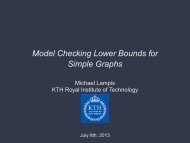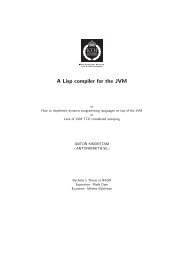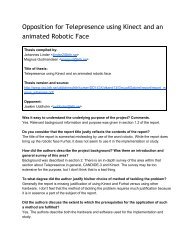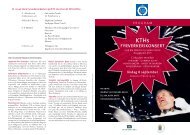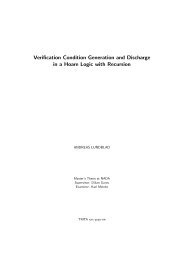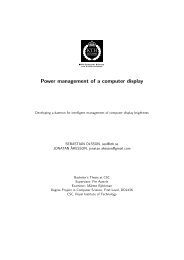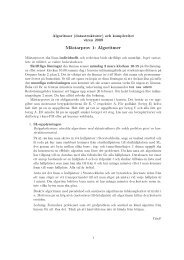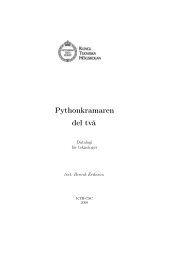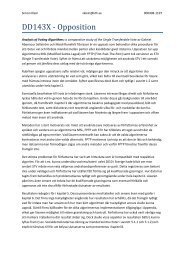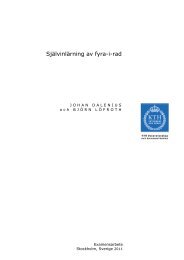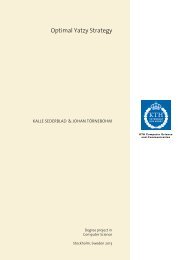Evaluation of Automatic Text Summarization - KTH
Evaluation of Automatic Text Summarization - KTH
Evaluation of Automatic Text Summarization - KTH
You also want an ePaper? Increase the reach of your titles
YUMPU automatically turns print PDFs into web optimized ePapers that Google loves.
4 CHAPTER 1. SUMMARIES AND THE PROCESS OF SUMMARIZATION<br />
automatic text summarization it is customary to differentiate between extraction<br />
based, or cut-and-paste, summaries where the summary is composed <strong>of</strong> more or<br />
less edited fragments from the source text (this is the task <strong>of</strong> text extraction), as<br />
opposed to abstraction based summaries (“true abstracts”) where the source text is<br />
transcribed into some formal representation and from this regenerated in a shorter<br />
more concise form, see Hovy and Lin (1997). A good overview <strong>of</strong> the field can be<br />
found in Mani and Maybury (1999).<br />
1.1.2 In Defense <strong>of</strong> the Abstract<br />
Why do we need automatic text summarization, indeed, why do we need summaries<br />
or abstracts at all? In the words <strong>of</strong> the American National Standards Institute<br />
(ANSI 1979) – “A well prepared abstract enables readers to identify the basic<br />
content <strong>of</strong> a document quickly and accurately, to determine its relevance to their<br />
interests, and thus to decide whether they need to read the document in its entirety”.<br />
Actually the abstract is highly beneficial in several information acquisition<br />
tasks, some examples are given in (Borko and Bernier 1975):<br />
• Abstracts promote current awareness<br />
• Abstracts save reading time<br />
• Abstracts facilitate selection<br />
• Abstracts facilitate literature searches<br />
• Abstracts improve indexing efficiency<br />
• Abstracts aid in the preparation <strong>of</strong> reviews<br />
Furthermore, human language is highly redundant, probably to facilitate error recovery<br />
in highly noisy channels. Mathematician and electrical engineer Claude E.<br />
Shannon has, for example, using a training data <strong>of</strong> 583 million words to create a<br />
trigram language model and corpus <strong>of</strong> 1 million words for testing, shown a 75%<br />
redundancy <strong>of</strong> English on letter level (Shannon 1951). Shannon initially defined<br />
redundancy as “the discovery <strong>of</strong> long-windedness” and accordingly it is not the<br />
amount <strong>of</strong> information that is increased, but the probability that the information<br />
reaches the recipient.<br />
Fittingly, entropy experiments have also shown that humans are just as good at<br />
guessing the next letter – thus discerning the content <strong>of</strong> the text on a semantic level<br />
– after seeing 32 letters as after 10,000 letters (Burton and Licklider 1955). Other<br />
experiments (Morris et al. 1992) concerning reading comprehension <strong>of</strong> extraction<br />
based summaries compared to full documents have shown that extracts containing<br />
20% or 30% <strong>of</strong> the source document are effective surrogates <strong>of</strong> the source document.<br />
Performance on 20% and 30% extracts is no different than informative abstracts.<br />
Then, how does one go about constructing an abstract? Cremmins (1996) give<br />
us the following guidelines from the American National Standard for Writing Abstracts:



